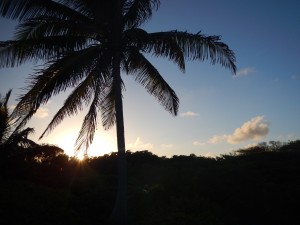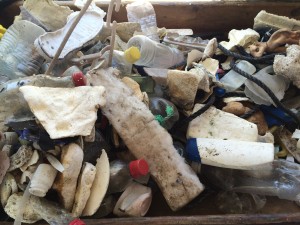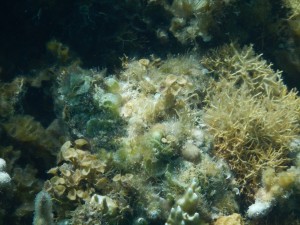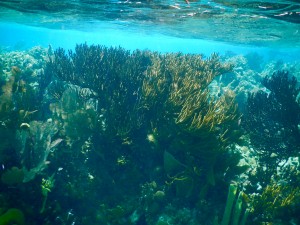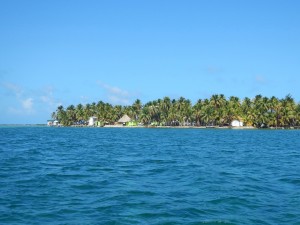Day 4 of Beach Days
Today occured in sort of a reverse order: we processed sea urchin and coral data from yesterday, presented our finding, taught ourselves about tropical biology taxonomic groups and went to the ocean.
One of the interesting interactions in marine life is one between the chub crab and brown algae. Chub crabs depend on epiphytes (organisms growing on alga) for their diet and the algae benefit from having epiphytes growing on its thallus (the entire body of an algae). While in the ocean, near a reef crest on our island, I was surprised to see this interaction in play. While looking for crustose coralline algae (a red encrusting algae that grows on corral rubble), I turned over rubbles and saw this interaction before my eyes: a tiny 2 cm blue-greenish crab picking off green dots of epiphytes living on top of red algae the size of my palm. Another aspect of crustose coralline algae is that it supports a number of animals that utilizes algae as habitat. Within mounds of these algae are 2 E. Leu sea urchins and 1 brittlestar that hid within pyramids of algae.
Back at the wet lab of our research station, I presented to the
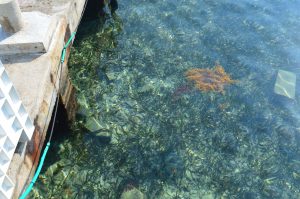
class 12+ species of red and brown algae, many of which I did not expect to see here, and many of which I realized were different species only after I had collected and viewed the specimens with greater detail and attention at the lab. After an incredible dinner of shrimp and rice, we heard our wonderful marine safety officer talk about Belizean culture. Despite its current political situation with Guatemala, Belize has been one of the most peaceful countries in the region and has been a destination for many victims of civil wars in the surrounding area. By the end of the class, we learned a couple phrases in the common unofficial language of Belize: creole. To say “what are you doing?” you would say “wat yu d do?”.
Instead of “yes” you would say “yeh mann”.



